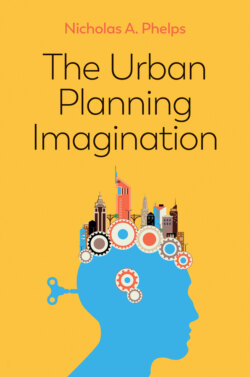Читать книгу The Urban Planning Imagination - Nicholas A. Phelps - Страница 25
The micro-level
ОглавлениеModern urban planning in capitalist economies ‘developed at some points in national leaps and bounds whereby local and historic practices were almost entirely irrelevant to its progress’ (Sutcliffe, 1981: 207). One reason for this is the dynamism injected into local contexts by individuals. The effects of micro-historical processes of change should not be ignored when set against macro- and meso-historical forces. Those individuals involved in the planning of colonial outposts in Africa rarely stayed long – sometimes just a matter of weeks or months – but the effects of their visits were lasting (Home, 2015). Individuals were partly responsible for elements of cultural hybridity apparent by the 1700s (Bayly, 2000) and which continued to unfold in the history of modern urban planning under imperial powers (Nasr and Volait, 2003).
While international exchange of planning ideas and practices was intense by the early 1900s, Ward (2005) notes that, unlike today, the individual planning actors involved could hardly be considered part of a Global Intelligence Corps (Olds, 2002) or a Transnational Capitalist Class (TCC) (Sklair, 2001). The transatlantic foment in urban planning ideas and practices (Saunier, 2001) during the late 1800s and early 1900s was significant but hardly bureaucratized in the way such exchanges are today. Instead, the forces of exchange were aggregations of numerous independent study groups, exhibitions and conferences. Only a portion of these individuals were what Sutcliffe (1981) regarded as ‘home-based’ in outlook. The remainder were arbiters of increasingly cosmopolitan urban planning tastes.
Individuals remain influential in the shaping of cities and urban planning discourse. Individualism has been one key ingredient in some of the UK’s most successful plans (Wray, 2016). In some cities and nations, both global north and south, it may be little exaggeration to suggest that political leaders have been the most influential citizen actors. Singapore’s rise from third world to first can hardly be separated from Lee Kuan Yew’s vision and influence (Lee, 2011). Mayors can be extremely important in the urban planning imagination and what it can achieve practically. New York City’s Robert Moses provides an example of one person’s mobilization of a municipal bureaucracy in the service of urban planning goals (Caro, 1974). Local urban planning agendas in a country like Indonesia are intimately related to the capacity and interests of mayors, to such an extent that rankings of local performance and policy emphases change markedly in a few years (Phelps et al., 2014).
There are charismatic architect–planners such as Santiago Calatrava who demand the absolute faith of citizens and politicians (Tarazona Vento, 2015). US architect-planners Andrés Duany and Elizabeth Plater-Zyberk have promulgated new urbanist formulations with the same sense of mission as Ebenezer Howard and Patrick Geddes. A global diaspora of expert consultants (Larner and Laurie, 2010; Prince, 2012) specializes in the substantive concerns discussed in the next chapter. These individuals operate within and draw sustenance from a now vast, globalized bureaucratic urban planning apparatus.
Citizens emerge as powerful vectors of transformation in the urban planning imagination in the case of neighbourhoods subject to major immigration flows and resultant ethnic concentration or ‘superdiversity’. Here, planning impacts on the urban form can range from immediate needs for religious, ethnic or culturally specific facilities to the injection of broader, longer-term imaginations centred on place making and the remaking of nature (Gottlieb, 2007).
